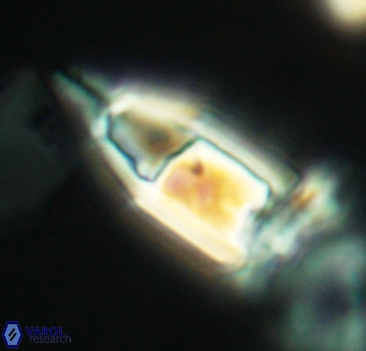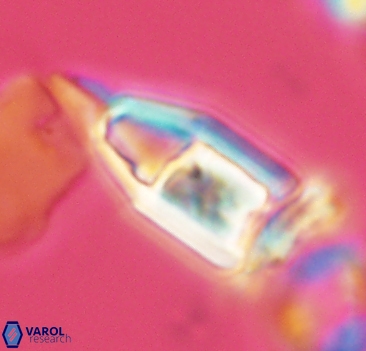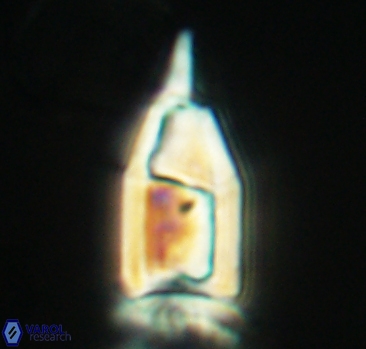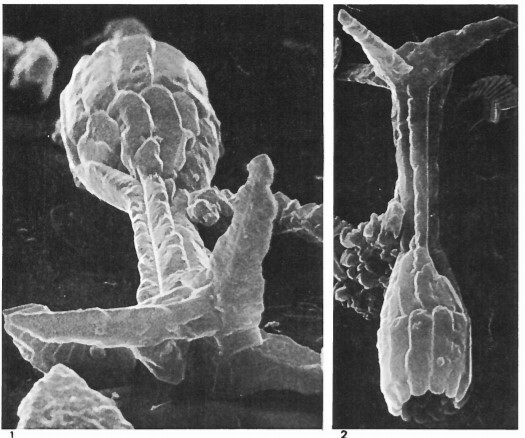Scampanella magnifica
Set number: 7
-
1
-
2
-
3
-
4
-
5
-
6
-
7
-
8
10µm
25x25 frame
Scampanella magnifica Perch-Nielsen in Perch-Nielsen & Franz, 1977
Species of Scampanella have a distal tier with smooth parallel sides and a very high cone with a single spine. The amalgamated spine is centrally placed and aligned with the length of the species. In well-preserved specimens, the end of the spines strongly tapers and bends 90 ° [perpendicular to length] to form swastika shape calix. The ratio of height to the width of species [excluding spines and collar] is between 1.5 to 2.0 whiles the ratio of distal tier to the cone is less than 1.5.
Scampanella magnifica is distinguished from Scampanella asymmetrica Perch-Nielsen in Perch-Nielsen & Franz (1977) by being symmetrical. Moreover, the ratio of distal tier to the cone is over 2 in Scampanella asymmetrica whereas it is less than 1.5 in Scampanella magnifica. The ratio of the height to the width is over 2.0 in Scampanella asymmetrica whilst it is about between 1.5 and 2.0 in Scampanella magnifica.
Perch-Nielsen, K., Franz, H. E., 1977. Lapideacassis and Scampanella, calcareous nannofossils from the Paleocene at sites 354 and 356, DSDP Leg 39, Southern Atlantic. Initial Reports of the Deep Sea Drilling Project 39, 849-862.




